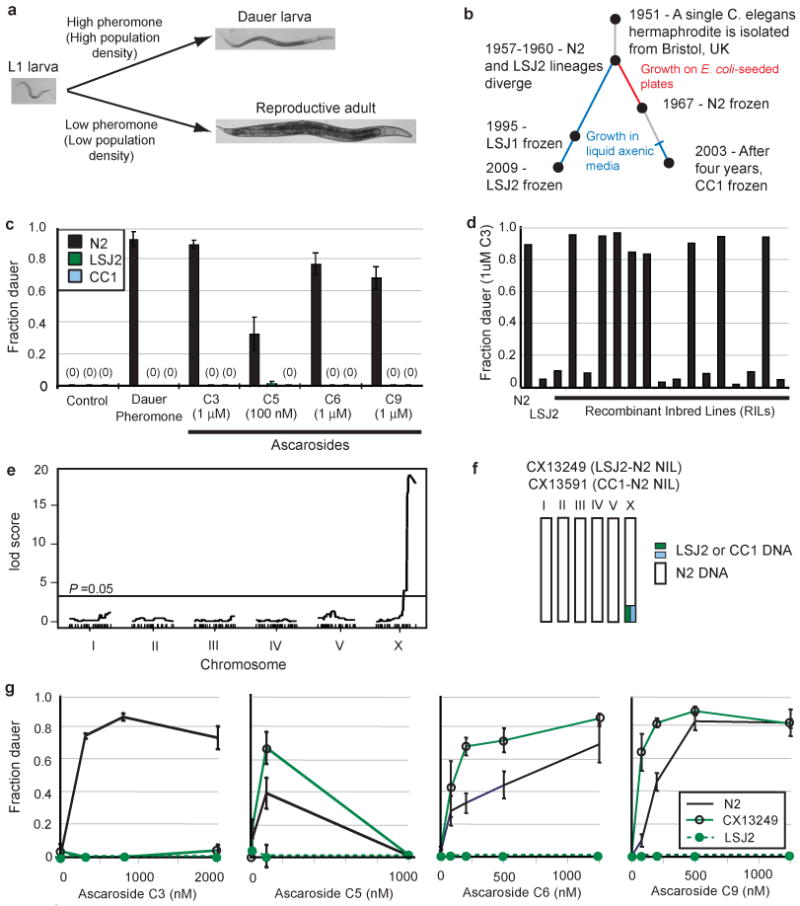Figure 1.

C. elegans cultivated in liquid are resistant to dauer pheromones. a, The developmental decision between reproductive growth and dauer larva formation is regulated by temperature, food, and population density. Population density is assessed by the release and sensation of ascarosides including C3, C5, C6, and C9. b, History of the C. elegans strains N2, LSJ1, LSJ2, and CC1 (see Methods). c, Dauer formation of N2, LSJ2, and CC1 in response to crude dauer pheromone or synthetic ascarosides. d, Dauer formation in response to synthetic C3 ascaroside. e, QTL mapping of C3 resistance. f, Schematic of near isogenic lines (NILs) with a small region from LSJ2 or CC1 introgressed into N2. g, Dauer formation in N2, LSJ2, and CX13249 strains. Error bars in all figures represent s.e.m.
